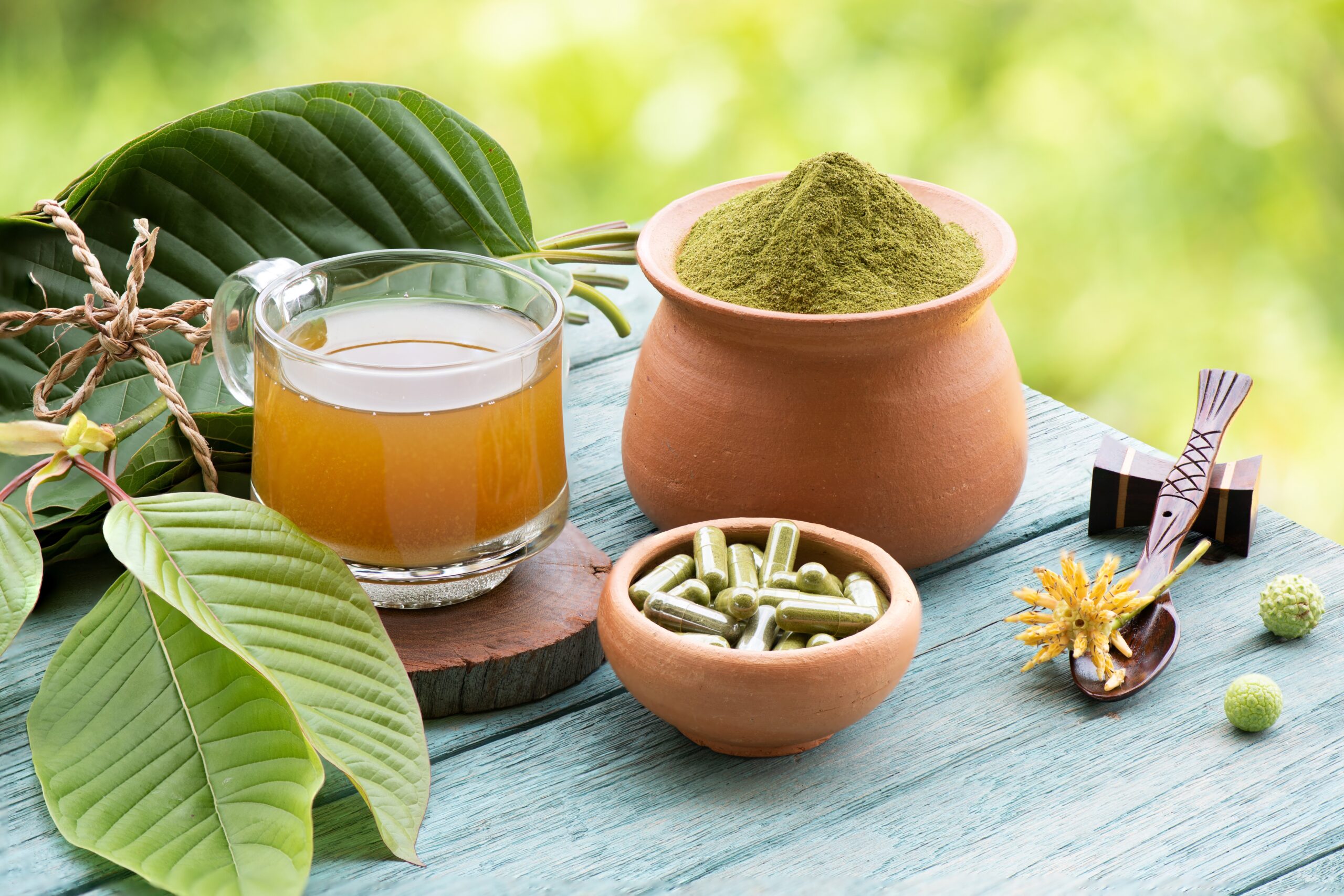Understanding Kratom: History, Uses, Key Considerations, and Addiction

While the numbers are not overwhelming at this point, it is important to address the growing popularity of kratom and its potential impact. Let’s dig into the nature of kratom, its historical background, and key considerations that individuals should be aware of when it comes to kratom use.
I. What is Kratom?
Kratom Overview: Kratom, scientifically known as Mitragyna speciosa, is a tropical evergreen tree native to Southeast Asia. Its leaves contain psychoactive compounds that can produce stimulating or sedating effects, depending on the strain and dosage.
Forms and Consumption: Kratom leaves are typically dried and crushed into a powder, which is then consumed by brewing as a tea, mixing with beverages, or encapsulating as a supplement. It is also available in extract and resin forms.
II. Historical Background of Kratom:
Traditional Use: Kratom has a long history of traditional use in Southeast Asian countries, where it has been utilized for its stimulant and pain-relieving properties. It has been used for centuries as a natural remedy by laborers, farmers, and indigenous communities.
Cultural Significance: Kratom has been deeply rooted in the cultural practices of Southeast Asian countries, such as Thailand, Malaysia, and Indonesia. It has been used for various purposes, including managing pain, increasing energy, and promoting sociability.
III. Key Considerations Regarding Kratom:
Legal Status: The legal status of kratom varies across countries and regions. It is important to research and understand the specific regulations in your jurisdiction before considering kratom use.
Health Benefits and Potential Risks:
- Potential Benefits: Advocates of kratom claim various benefits, including pain relief, mood enhancement, increased focus, and reduced anxiety. Some individuals also use kratom as an aid for opioid withdrawal.
- Potential Risks and Side Effects: Kratom is not without risks. It can cause adverse effects such as nausea, vomiting, constipation, dizziness, and potential dependence or addiction. Long-term use may also lead to more severe health consequences.
Lack of Regulation and Quality Control: Due to limited regulations surrounding kratom production, distribution, and labeling, there is a lack of consistency in product quality and potency. This poses challenges for consumers seeking reliable and safe kratom products.
Potential for Addiction and Withdrawal: While kratom is sometimes promoted as an alternative to opioids, it can itself be addictive. Regular and prolonged use may lead to physical and psychological dependence, necessitating professional support for withdrawal.
Interaction with Medications and Health Conditions: Kratom may interact with certain medications and health conditions, including liver disease, psychiatric disorders, and cardiovascular conditions. It is crucial to consult with a healthcare professional before considering kratom use.
IV. Seeking Professional Guidance and Support:
Importance of Professional Advice: Before making decisions regarding kratom use, individuals should consult with addiction specialists, healthcare providers, or rehab and recovery centers to gain a comprehensive understanding of the potential risks and benefits.
Alternative Approaches to Sobriety: If you are seeking a substance-free lifestyle, exploring holistic approaches to recovery, such as therapy, counseling, support groups, and evidence-based treatment programs, can provide effective and sustainable pathways to sobriety.
V. Caution, Risks, and Lack of Regulation
Understanding kratom requires a comprehensive examination of its nature, historical background, and the considerations surrounding its use. As a rehab and recovery center, our primary goal is to promote overall well-being and support individuals on their journey toward sobriety.
It is crucial to approach kratom use with caution, recognizing the potential risks, lack of regulation, and potential for dependence or addiction. We encourage individuals to seek professional guidance and explore alternative approaches to recovery that prioritize long-term sobriety and well-being.




